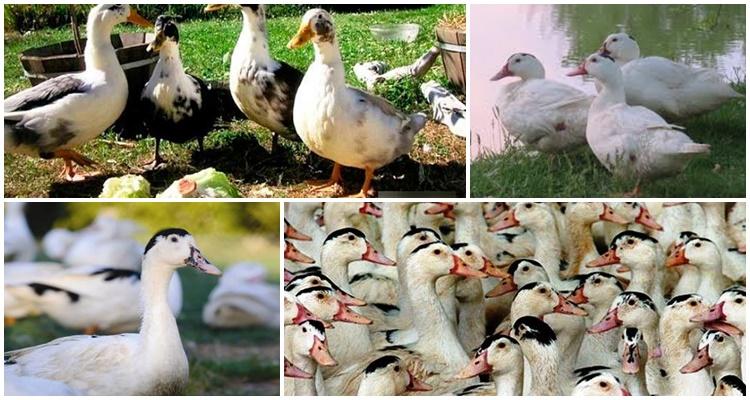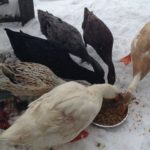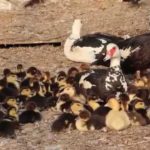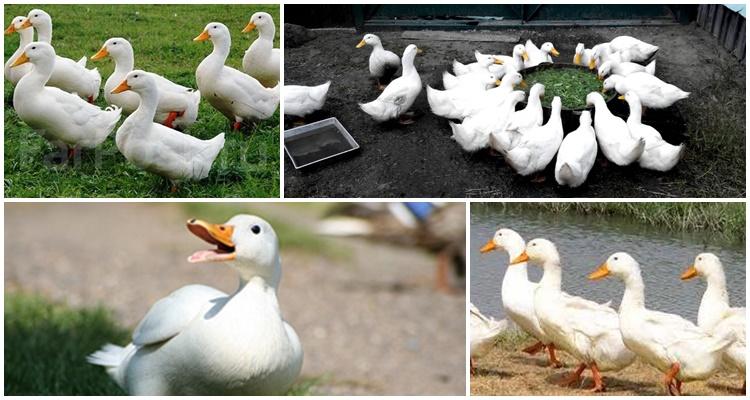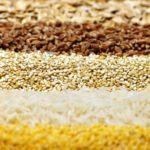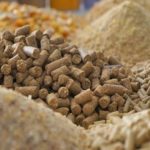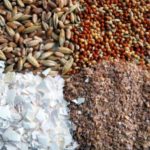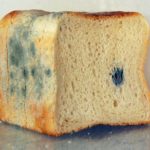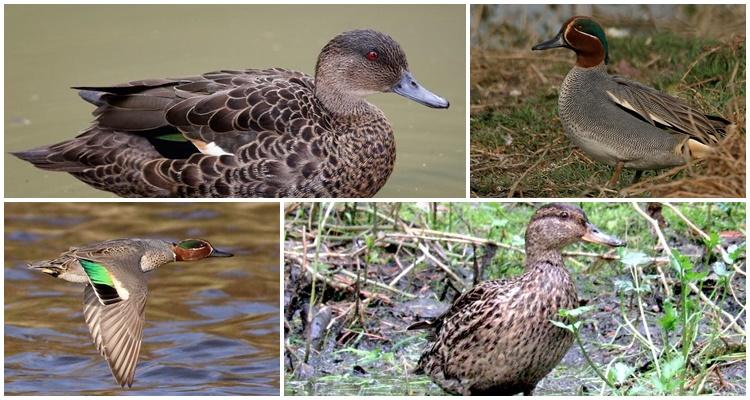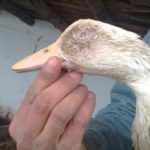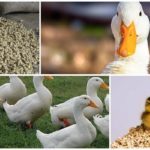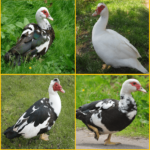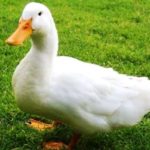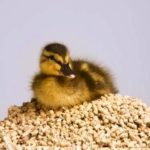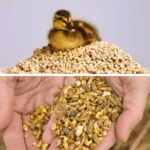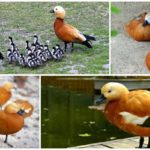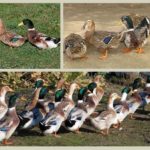Taming the Wild ducks are a good start for beginner poultry farmers. At home, mallard ducks take root best. Their nests can be found in tree hollows or reeds, near forest rivers. Birds are adapted to survive in warm and cold climates, are unpretentious in keeping and do not require special technical equipment for a duckling house. The main problem of breeders is what to feed wild ducks and ducklings. But their diet is not too different from that of poultry.
How to care for wild ducklings at home?
In nature mallard ducklings They leave the nest following their mother on the second day after hatching. They quickly become independent, obtaining their own food by catching fry and insects. In broods of mallards there are from eight to eleven ducklings.
Cardboard boxes or large wicker baskets lined with straw are suitable for keeping small chicks at home. The boxes should be placed in a warm place in the house for the first five days, and then the grown ducklings should be transferred to the duckling house.
Subtleties of captivity
Safe ways to catch and tame ducks:
- snare - a thin cord with a loose loop at the end is placed in the grass. When the duck steps into the loop with its paw, the lace is tightened;
- trap - bait is placed on the ground, a box or net is placed on top and dropped on the bird.
A longer-term way to acquire a domestic flock of ducklings is to feed the brood during the summer, and then transfer it to the duckling house. Mallards get used to the people who feed them and flock to the food themselves.
Birds need to create conditions close to natural - ensure free movement and provide a place for swimming. The main requirements for arranging a duck house and keeping birds:
- the room is brick, insulated from the inside with sheets of chipboard;
- bedding - made of sawdust and straw;
- the aviary is spacious, the birds are accustomed to activity, in a cage they will become apathetic;
- fresh air - a ventilation system must be provided in the duck house;
- walking - an area for ducklings to walk should be allocated in an area overgrown with grass and fenced with a fine mesh;
- pond - place a bowl of water in the paddock for walking.
It is good to set up an artificial pond in the garden and put small fish there. In the wild, mallards spend the summer on the water, feeding and teaching ducklings to swim. In warmer months, birds will do well in an open pen with a pond.
The depth of the pond should not exceed one and a half meters. Ducks dive deep for fish, equal to the length of its body - approximately 60 centimeters. The banks of the reservoir should be made flat.
The immunity of wild ducks is stronger than that of domestic ducks. They need to be vaccinated in case of an unfavorable epizootic situation in the region. Little ducklings should not be allowed to walk on wet grass after rain or in dew so that they do not catch a cold.
Adult mallards are capable of raising someone else's orphan - a duckling of a domestic breed of bird. In nature, ducks take care of the offspring of their neighbors who died after being attacked by predators.
What to feed wild birds?
Adult ducks eat grains, vegetables, legumes and plants. In summer, birds are released to graze on the grass. Diet for ducklings:
- wheat, oatmeal, barley groats;
- peas;
- boiled potatoes;
- beet;
- carrot;
- sunflower cake;
- bran;
- feed yeast;
- fish fat.
To feed hatched ducklings, prepare a mixture of crushed eggs and low-fat cottage cheese in meat or fish broth. In nature, ducks eat algae.
You need to add duckweed to the diet, and also offer soaked kelp meal. Bloodworms will replace insects. Birds should be given fresh chopped fish every two days.
You can determine what to feed a wild duckling by its plumage. The newly hatched chick is covered in yellow down. In this case, complementary feeding begins with crushed boiled eggs, cottage cheese and crushed grains.Chicks with brown feathers are fed grains with the addition of chopped grass and boiled chopped potatoes.
Winter diet of ducks:
- corn;
- wheat;
- beans;
- oats;
- silage;
- vegetables.
To provide birds with green food in winter, wheat grains are sprouted. Ducks need plenty of water. There should always be containers with clean water in the duck house. To prevent ducklings from getting their paws wet in the troughs, it is advisable to install automatic drinkers and supply filtered water free of chlorine. But it’s easier to put containers with settled water and change it twice a day. It is not recommended to give raw tap water, but spring water will do.
What should you not give?
Prohibited food for wild ducks:
| Product | Harm |
| Fresh, moldy bread | Clogs the esophagus, causes stagnation in the gastrointestinal tract, the development of fungal disease of the respiratory tract |
| Whole raw vegetables | Not digested, gets stuck in the crop |
| Crackers | Swells in the stomach |
| Pumpkin, zucchini | Have a laxative effect |
| Herbs of the Ranunculaceae family | Contains paralyzing toxins |
To hatch wild ducklings, vegetables need to be boiled and finely chopped. For better digestion of food, you should place chalk and crushed eggshells in a separate bowl.
How long do they grow?
Wild ducklings develop quickly and at two months of age look like adult ducks. In order for the chicks to gain weight better, they should be fed with vitamin herbs - dill, scalded nettle leaves, beet tops, Chinese cabbage. Raising ducklings for fattening lasts up to seventy days, as then molting begins. The carcasses will be difficult to pluck, and the meat will become tough.
Breeding Features
In nature, females build nests and lay eggs in the spring.The males leave them after the clutch appears and go to molt. Birds mate in a pond, so you need to put a bowl of water in the duck house or release the ducks to the pond.
In captivity, females lay eggs three times a year. Mallard ducks do not abandon their chicks, so you will not need an incubator. Ducks hatch eggs intermittently, during which they feed. Before leaving, they cover the masonry with their own down. Laying hens should be fed four times a day, with more oats and barley added to the diet.
The shells of mallard eggs are harder and smoother than those of farm birds. The weight of one egg is 60-80 grams. The duration of the incubation period is 26-28 days. Chicks hatched in cold weather must be kept warm in the first days. The brood is placed in a box lined with foam on the inside and placed on a bowl of hot water or next to a radiator. In summer, chicks do not need heating, but they should be protected from drafts.
Possible mistakes
The first miscalculation is the capture of a wild duck of an indomitable species. It is rare to see migrating waterfowl near villages and in city parks. If the bird is aggressive and does not eat or drink, it is better to release it into the wild. More often, fishermen come across friendly mallards, gadwalls and red-headed ducks. These three breeds quickly become accustomed to humans, gain weight and lay eggs several times a year. The birds are similar in gray plumage with a wavy black pattern. Mallard drakes are distinguished by their green heads. Unfavorable conditions for wild ducks:
- cellular content;
- lack of water and walking;
- large pieces in food;
- feeding only grass;
- absence of solid additives - chalk, eggshells, shells.
Cereals should be given crushed to birds of all ages. Boiled vegetables are given only in chopped form or mashed into porridge.Grass and cabbage leaves are cut for the chicks. The beak of adult ducks is adapted to tear pieces from leaves and tear off stems. The cleanliness of the duck house should be maintained regularly, as when keeping purebred domestic ducks: the bedding should be updated every two days, and in the summer, the premises should be disinfected while the birds are walking.
In the wild, mallards do not come into contact with droppings for long periods of time. In a dirty duck house, they will become infected with the same infections as poultry. If the temperature in the duck house in winter drops below five degrees Celsius, the room needs to be heated.
Ducks should not be allowed to roam unattended in an area that is not fenced in. Chicks at ten days of age try to fly, but may fly outside the area and not return. Birds tamed as adults should theoretically return to a place where food and shelter are always waiting for them. But it is still recommended that wild ducks trim their wing feathers before the appearance of the fourth generation.

